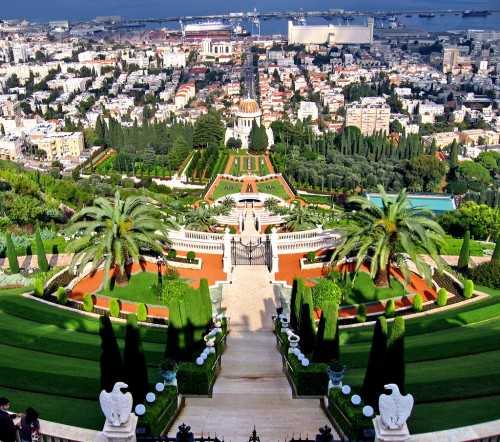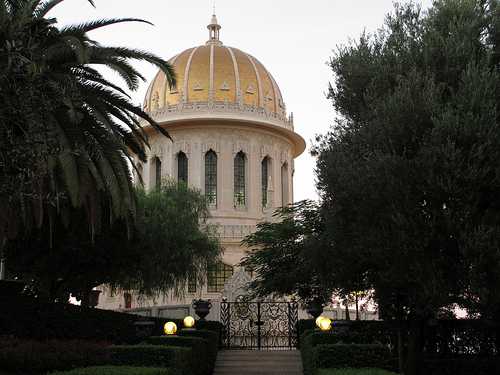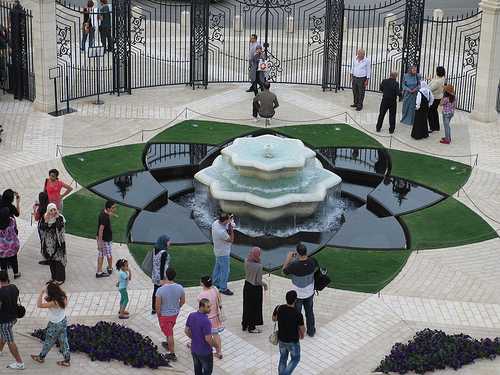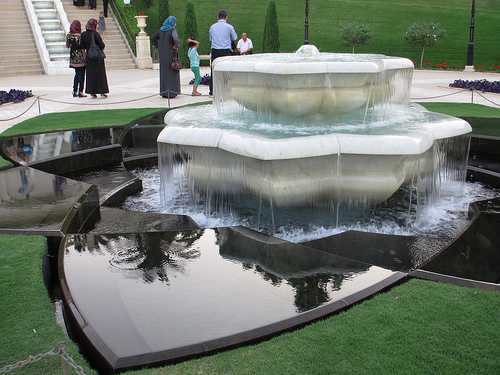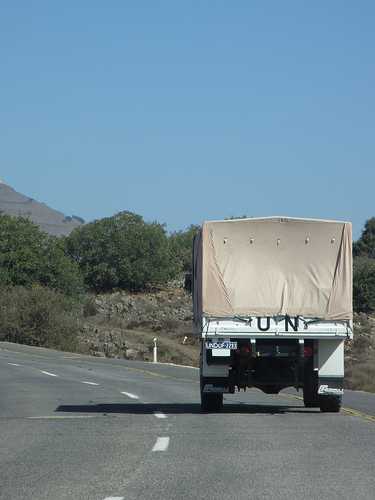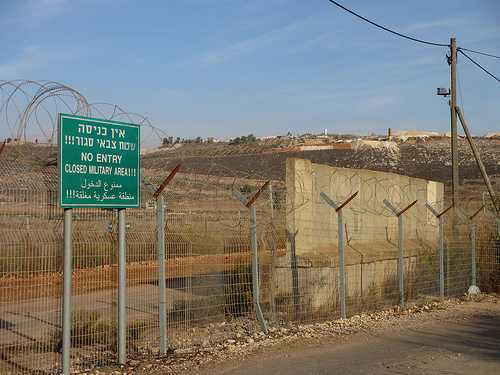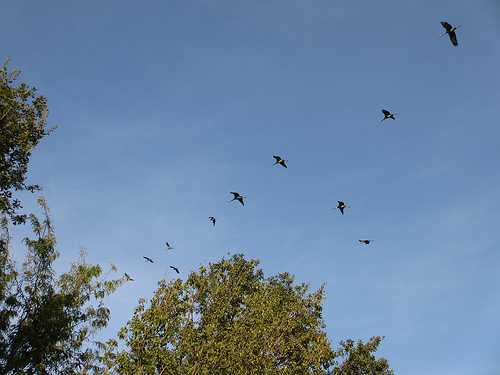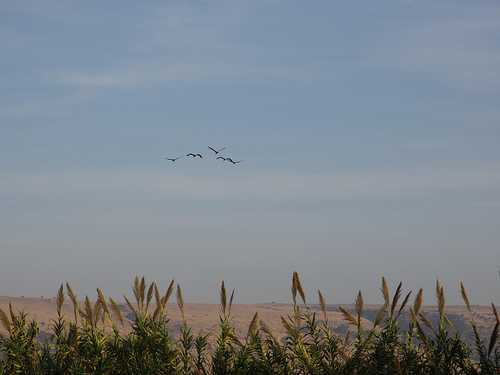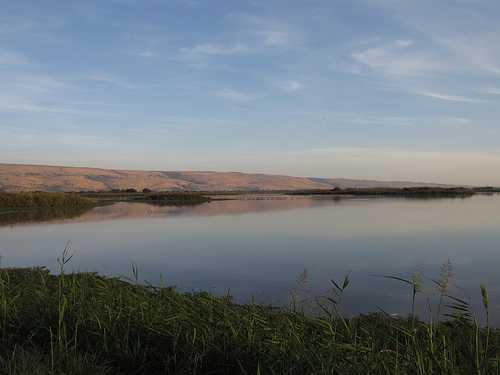Craig and Sal Go Global
Northern Israel
November 12, 2012
We headed north up the Israeli coast in our trusty little car, stopping at a few small towns along the way. One of the places we stopped in at was an artists’ village called Ein Hod. It seems like Israel is a very arty country, with lots of public artworks and galleries throughout the country. We also stopped at a lovely garden dedicated to Edmond Rothschild, a wealthy Jewish businessman who purchased land in Palestine for some of the first Israeli settlements.
Our next stop was the Baha’i Gardens in Haifa. The gardens are truly beautiful works of art, which were built solely through donations from the public. We must admit we knew practically nothing about the Baha’i faith. It’s an interesting amalgamation of several monotheistic religions – Baha’i accept Moses, Buddha, Muhammad and Jesus as messiahs (each with a unique message for humankind) and there are a few messiahs unique to Baha’i too. The gardens are a sacred site for the Baha’i as Báb, one of their messiahs, is buried there.
There is a beautiful fountain at the bottom of the gardens. The ‘petals’ you can see in the photo below are deep bowls made of dark stone. The water lies perfectly flat on top, looking like dark, flawless glass from a distance. As you get closer you can see through the water and look at the detail of the stone underneath.
The drive became less fun as the sun set and we left Haifa. With eight million people in a country smaller than the Waikato region, the coastal plain of Israel is full of cities and towns. We crawled along in traffic for 90 minutes before reaching a freely flowing highway. Our base while in Northern Israel was a bed and breakfast just outside of Safed, a town of 30,000. The atmosphere in Safed is markedly different to Tel Aviv, being much more deeply religious - including as a centre of Kabbalah (Jewish Mysticism).
Our first day exploring the north took us to Rosh HaNikra, a seaside cave on the northern border of Israel, and Akko, an ancient and UNESCO protected city on the Mediterranean coast.
We were surprised to find that NZ Army engineers helped construct a railway tunnel at Rosh HaNikra which linked Israel to Lebanon during the British Mandate times. The line was used for just a few years (including to bring Holocaust survivors to Israel) until it was destroyed by Jewish resistance fighters prior to Israeli independence.
Next we went to Akko, a city further south on the Mediterranean coast. Luckily, we were there during Eid Al-Adha, a major Islamic festival. The old city was full of celebrating families and there was a carnival feel to the place. Akko was a great town to get lost in – we spent a while wandering around all the small alleyways.
The next day we spent driving around the Golan Heights, an area with a long and contested history. When the Ottoman Empire was divided up after World War I, the region became a part of Syria. It was the site of a lot of violence between Israel and Syria from the 1948 Israeli War of Independence until the Six Day War in 1967, when Israel captured the area from Syria. In 1981, Israel annexed the Golan Heights – a move still not recognised by the international community. While Israel and Syria have no formal peace agreement, the border has been quiet now for decades.
We visited Mount Bental - a vantage point into Syria, over a major battleground of the Yom Kippur War in 1973. In a surprise attack, the Syrian army crossed the Israeli border in 1973 with 1,200 tanks, starting one of the largest tank battles in history. The war, the third started by Syria in less than 40 years, ended with Syria being driven back to roughly the same borders.
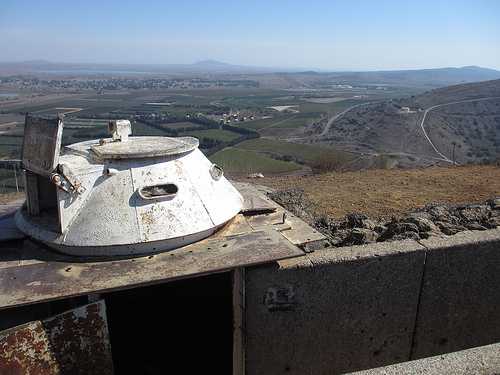 The war-torn history of the region was clearly evident just driving around. For the first time we saw signs warning of landmines. More than 100 civilians have been killed by the mines since they were laid by the Syrian army in the Yom Kippur War.
The war-torn history of the region was clearly evident just driving around. For the first time we saw signs warning of landmines. More than 100 civilians have been killed by the mines since they were laid by the Syrian army in the Yom Kippur War.
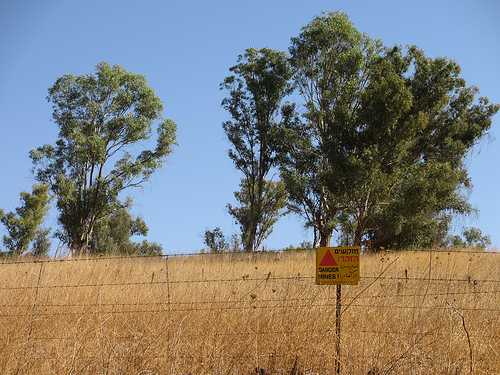 It was also the first time we’ve been somewhere with a UN peacekeeper presence. We saw several UN vehicles on our drive. The peacekeepers monitor the de facto Israel-Syria border on the 1974 cease fire line.
It was also the first time we’ve been somewhere with a UN peacekeeper presence. We saw several UN vehicles on our drive. The peacekeepers monitor the de facto Israel-Syria border on the 1974 cease fire line.
If that weren’t enough, the region also has a hostile border with Lebanon (strangely named the Good Fence). This border has seen war as recently as 2006, when Israel fought Hezbollah militants within Lebanon. We drove to the most northern point of Israeli controlled territory, a town called Metula which is almost completely surrounded by Lebanon.
Getting away from war for a bit, we visited the Hula Valley. The Hula Valley is a stopping point for migratory birds heading between Europe and Africa. Every autumn and spring around half a billion birds pass through!
Visiting the Golan Heights was a real eye-opener and helped us to understand the Arab-Israeli conflict. From one contested area to another, we drove south from Safed through the West Bank to reach our next destination: the Dead Sea.
Comments from WordPress
-
Gina 2012-11-12T17:53:57Z
I’m loving your Israel posts! I would love to go there… I hope you got some good food along with your history!
-
Lesley 2012-11-12T18:58:07Z
We are making another batch of hummus this weekend…yum. Although not the variety you are experiencing. Lx

Written by Craig Drayton and Sally Robertson

